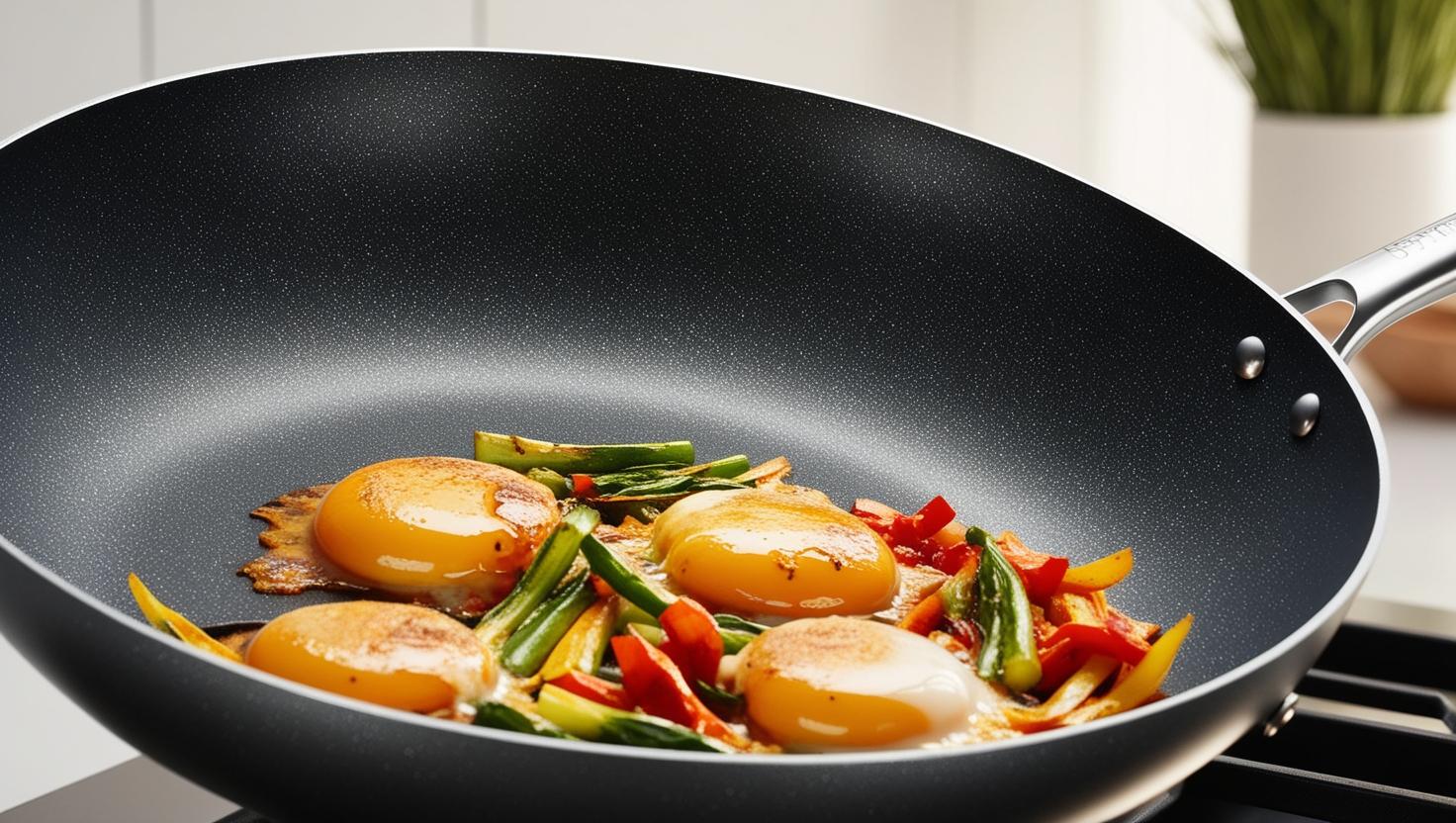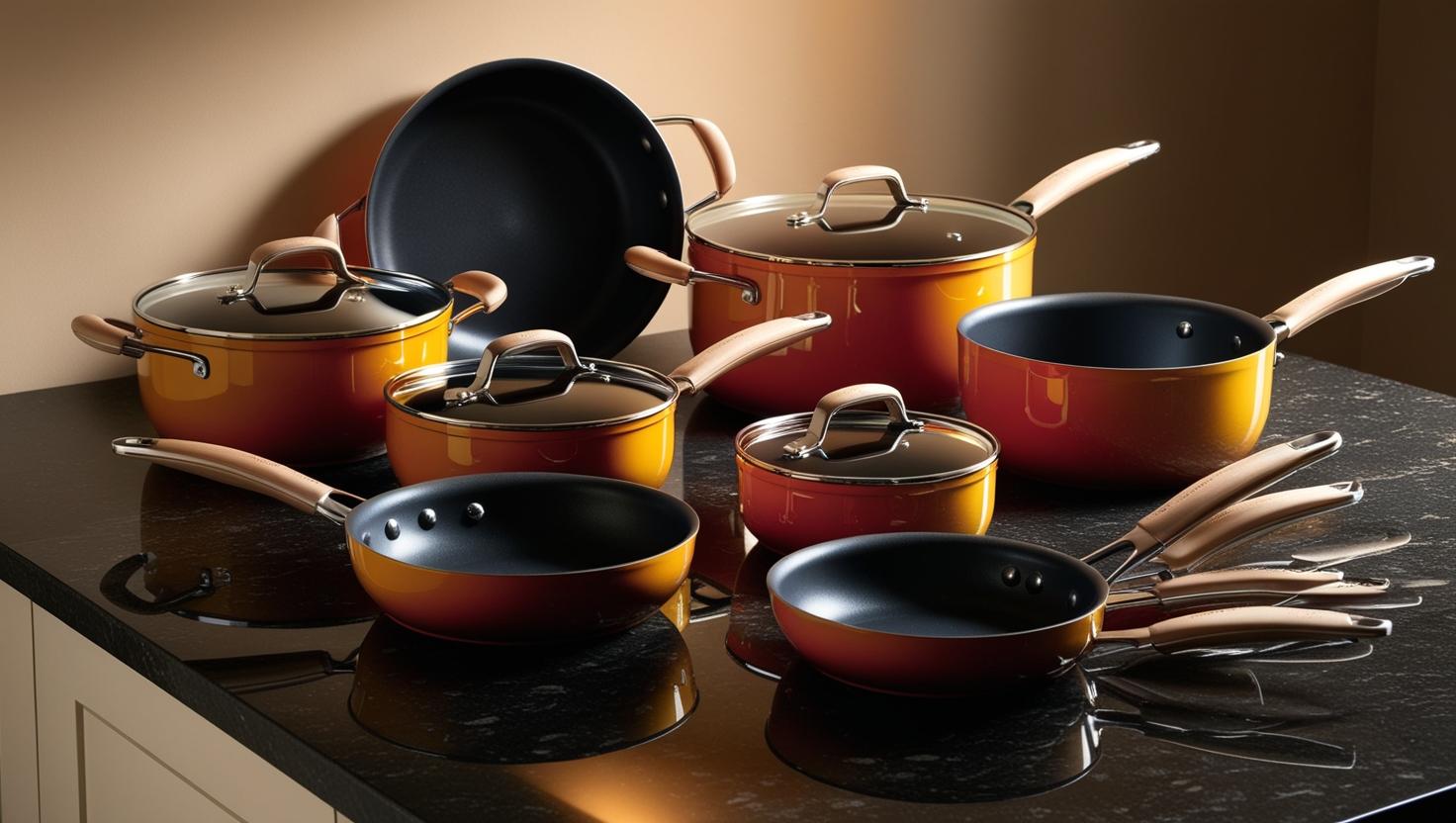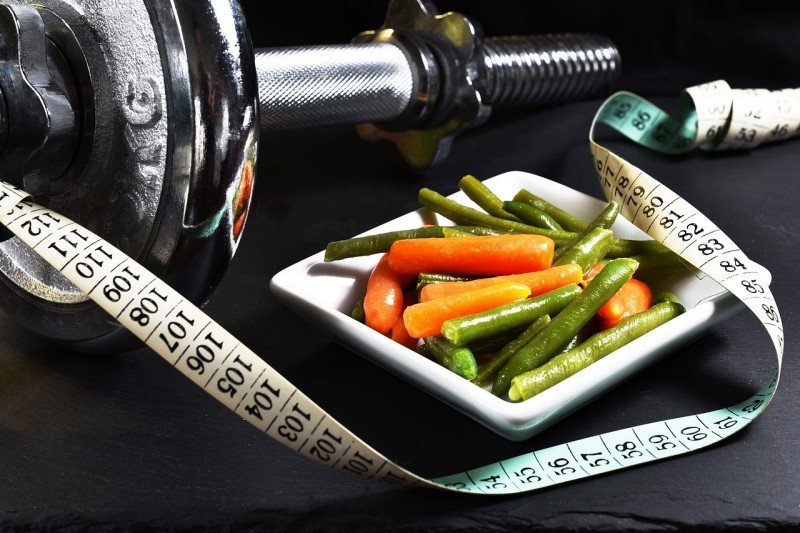Non-stick cookware has become a staple in many kitchens, offering convenience and ease when it comes to cooking and cleaning. But have you ever wondered how these pans manage to prevent food from sticking to their surfaces? The secret lies in the materials and coatings used in their construction.
Most non-stick cookware is made using a base material such as aluminum, renowned for its excellent heat conduction properties. This base is then coated with a layer of polytetrafluoroethylene (PTFE), commonly known as Teflon. PTFE is a synthetic polymer that possesses an incredibly low coefficient of friction, making it perfect for non-stick applications.
The non-stick nature of these pans works by creating a barrier between the food and the metal surface. When heat is applied, the PTFE coating becomes extremely smooth, preventing food particles from adhering to it. Additionally, the low friction of the coating means that even if some food does manage to make contact, it can easily slide off without sticking.
It's important to note that proper care and maintenance of non-stick cookware can significantly extend its lifespan. For instance, using non-metallic utensils to avoid scratching the PTFE coating and avoiding high-temperature cooking beyond the manufacturer's recommendation are essential practices to prevent damage to the non-stick surface.

Unraveling the Science Behind Non-Stick Coatings
Non-stick coatings have revolutionized the way we cook and clean up afterwards. But have you ever wondered how these magical coatings work? Let's delve into the science behind non-stick cookware.
At the heart of non-stick coatings is a substance called polytetrafluoroethylene, or PTFE. This remarkable material is responsible for the non-stick properties of pans and other cookware. PTFE is a synthetic fluoropolymer that is highly resistant to chemicals and has a very low surface energy.
In simple terms, PTFE has a unique molecular structure that prevents other substances from sticking to its surface. This is because the carbon-fluorine bonds in PTFE are extremely strong, making it difficult for anything to adhere to its surface. When food or liquid is placed on a non-stick surface, it forms a barrier between the surface and the substance, preventing it from sticking.
To enhance the durability and performance of PTFE coatings, another substance called polymeric resin is often added. The resin helps to strengthen the coating, making it more resistant to scratches and wear over time. Additionally, some companies may incorporate ceramic particles or other materials into their non-stick coatings to further enhance their properties.
Understanding the Chemistry of Non-Stick Cookware

In the modern kitchen, non-stick cookware has become a staple. From frying pans to baking sheets, these convenient kitchen tools make cooking and cleanup a breeze. But have you ever wondered about the science behind their magical non-stick properties? Let's dive into the chemistry of non-stick cookware and explore how it works.
Non-stick cookware is typically made of a metal substrate, such as aluminum or stainless steel, coated with a special polymer called polytetrafluoroethylene (PTFE). PTFE is a synthetic fluoropolymer that has an incredibly low coefficient of friction, making it almost impossible for food to stick to its surface. This unique property is due to the presence of fluorine atoms in the PTFE molecule, which repel other molecules, including fats and oils commonly used in cooking.
The non-stick coating on cookware is created through a process known as spray coating. First, the metal substrate is thoroughly cleaned and prepared to ensure optimal adhesion of the PTFE. Then, a liquid PTFE dispersion is sprayed onto the surface, forming a thin layer. The coated cookware is then heated to a high temperature, around 700°F (370°C), causing the PTFE to bond with the metal surface. This creates a durable and long-lasting non-stick coating that can withstand high cooking temperatures.
While non-stick cookware provides numerous benefits, it's important to note that the PTFE coating can release toxic fumes when overheated to extreme temperatures, typically above 500°F (260°C). These fumes can be harmful to humans and pets, causing temporary flu-like symptoms. Therefore, it's crucial to use and maintain non-stick cookware within its recommended temperature range to ensure safe and enjoyable cooking experiences.
Choosing the Best Non-Stick Cookware: Tips and Tricks
When it comes to non-stick cookware, selecting the right option can make a significant difference in your cooking experience. Here are some helpful tips and tricks to guide you in choosing the best non-stick cookware for your needs.
1. Material: Non-stick cookware is available in various materials, such as Teflon, ceramic, and stainless steel with a non-stick coating. Teflon is a popular choice due to its excellent non-stick qualities, but it is crucial to ensure it is free of PFOA, a potentially harmful chemical. Ceramic cookware is a healthier alternative, as it is made from natural minerals and is free of any chemicals. Stainless steel with a non-stick coating offers excellent durability and heat conductivity.
2. Durability: Consider the durability of the cookware before making a purchase. Look for options that have a high-quality non-stick coating that will not peel or scratch easily. Thicker coatings tend to be more durable in the long run, ensuring your cookware lasts for years to come.
3. Heat Resistance: Pay attention to the heat resistance of the non-stick cookware. Different brands and materials have varying heat limits. Make sure to select cookware that can withstand the temperature range you typically cook at. Using cookware above its heat resistance can result in damage to the non-stick coating.
4. Maintenance: Lastly, consider the ease of maintenance. Look for non-stick cookware that is dishwasher safe for convenient cleaning. Additionally, opt for options that require minimal oil or fat for cooking, making it easier to prepare healthier meals.



